Staphylococcus aureus is a serious bacterial infection that can cause life-threatening illnesses. It is estimated that approximately 1 in every 3 people carry the bacteria and yet, there is no known cure. In this blog post, we will discuss the one true solution for treating Staphylococcus aureus and how it can help those who suffer from this infection. Read on to find out more about the only remedy that promises 100% success in treating Staphylococcus aureus.
What is staphylococcus aureus?
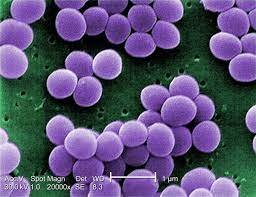.jpg)
.jpg)
Staphylococcus aureus, often referred to simply as “staph”, is a type of bacteria commonly found on the skin or in the nose of healthy individuals. It is one of the most common causes of infections around the world, ranging from mild skin infections to life-threatening illnesses such as pneumonia, toxic shock syndrome, and sepsis. Staph infections can be spread by direct contact with someone who is infected or by coming into contact with items that have been contaminated with the bacteria. It is especially important to practice good hygiene and wash hands regularly to avoid spreading staph infection. However, even when preventative measures are taken, staph infections still occur. While there are various treatments available for treating staphylococcus aureus, none of them offer 100% efficacy in providing a full cure. Antibiotics are generally used for treatment but there is an increasing trend of antibiotic resistance among S. aureus strains which has made it difficult to treat certain types of infections. This means that more powerful medications are needed for successful treatment. Recently, researchers have been exploring the potential of using phage therapy – using viruses to target and destroy bacterial cells – to treat drug-resistant staph infections. Phage therapy involves administering viruses that specifically target bacterial cells and destroying them from within, while leaving human cells intact. Studies suggest that phage therapy may be effective against drug-resistant staphylococcal strains, however further research is required before it becomes widely accepted and adopted as a standard treatment. Additionally, alternative treatments such as honey and Manuka honey have also shown promise in reducing levels of bacterial growth associated with staphylococcal infection, making them possible alternatives to antibiotics. Although these remedies do not provide a complete remedy for staphylococcal infections, they may help reduce symptoms and improve quality of life until other treatments become available.
What are the symptoms?
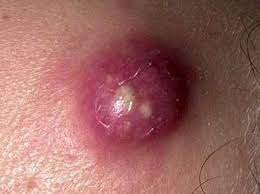.jpg)
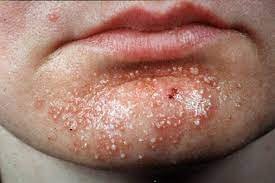.jpg)
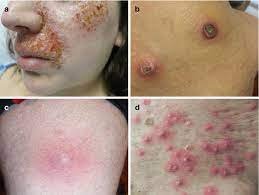.jpg)
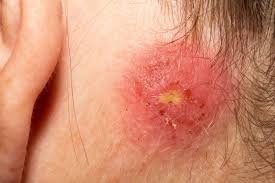.jpg)
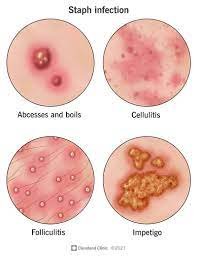.jpg)
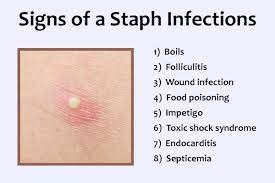.jpg)
Staphylococcus aureus is a common bacteria that can cause a variety of different illnesses and infections. Symptoms vary depending on the type of infection, but some of the more common signs and symptoms include:
-Skin infections like boils, abscesses, cellulitis, and impetigo
-Sore throat, coughing, sinusitis
-Bacteremia (bloodstream infection)
-Toxic shock syndrome
-Joint and bone infections
-Endocarditis (heart infection)
-Septic arthritis (infection in the joint)
It is important to note that not everyone who is infected with staphylococcus aureus will experience all of these symptoms. Some people may only have one or two mild symptoms, while others may be more severely affected. If you suspect that you may have been infected with staphylococcus aureus, it is important to seek medical attention right away in order to ensure proper treatment. There are many treatments available for this bacterial infection, ranging from antibiotics to surgical interventions. Unfortunately, there is no single “cure” for staphylococcus aureus. However, there are several ways to effectively manage and reduce the risk of further infections and complications. For instance, keeping wounds clean and dry by changing dressings regularly, as well as taking medications as prescribed by your doctor can help control the spread of infection. In addition, practicing good hygiene, such as washing hands regularly and avoiding contact with those who are infected, can also help limit the spread of the bacterium. While there is no single remedy for treating staphylococcus aureus, taking precautionary measures and utilizing available treatments can help reduce your chances of experiencing serious health problems from this common bacterial infection. For example, if you know someone who has an active staph infection, take extra steps to avoid close contact and/or sharing personal items. When it comes to prevention, proper hygiene plays a huge role. Wash your hands often, especially after coming into contact with someone who has an active staph infection, and make sure to cover any open sores with bandages or other protective coverings. To treat existing infections, see your doctor about getting a prescription for antibiotics. Depending on the severity of your infection, doctors may prescribe oral or topical medications to fight off the infection. Surgery may also be necessary in certain cases. To reduce long term risks, consult your healthcare professional about preventative measures like vaccination. This will reduce your chance of developing further issues related to staphylococcus aureus over time.
How can you treat it?
.jpg)
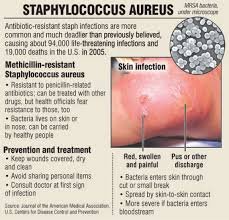.jpg)
.jpg)
.jpg)
When it comes to treating Staphylococcus aureus, there is no one-size-fits-all approach. However, there are many treatment options available to those who are suffering from this infection.
The most common type of treatment is antibiotics. Depending on the severity of the infection, your doctor may prescribe either an oral or intravenous (IV) antibiotic. Oral antibiotics are taken by mouth and are usually taken for 7-14 days. IV antibiotics are delivered directly into the bloodstream and can be given for as long as 4 weeks or more.
For more severe infections, your doctor may recommend hospitalization. During this time, you may receive IV antibiotics along with fluids, nutrition and other supportive treatments. In some cases, surgery may be needed to remove any foreign objects that are causing the infection.
In addition to antibiotics, other treatments may be recommended. For example, topical medications such as creams, gels or ointments may be applied to the affected area to reduce pain and inflammation. Other treatments such as drainage and debridement may be necessary to treat certain types of staph infections.
Finally, it is important to practice good hygiene in order to prevent the spread of the infection. This includes washing your hands often and avoiding contact with anyone who has a staph infection. Be sure to clean any wounds or cuts immediately and keep them covered until they heal. Avoid sharing personal items like towels, bedding, and clothing with anyone who has an active infection. It's also wise to avoid public areas where people gather such as swimming pools, saunas, or gyms if you have an active infection. As part of prevention, you should always wear shoes or sandals when walking around public bathrooms or locker rooms. You should also avoid shaving or touching infected skin sores. If you must shave an area, use a new disposable razor each time to prevent spreading germs. Also consider using antiseptic or antibacterial soaps and cleansers after touching any open wound or sore. Additionally, try to minimize your stress levels as much as possible. Stress can weaken your immune system, making it easier for bacteria to take hold and cause infection. Finally, try to stay away from crowded areas or individuals who appear unwell, as these are places where staph bacteria thrive.
What is the one true solution?
It is also important to practice good hygiene when treating staph infections. Wash your hands frequently and keep cuts and scrapes clean and covered until healed. Avoid sharing personal items such as razors and towels with other people. Additionally, you should not wear clothing that may have been contaminated with the bacteria for long periods of time. Doing so can help to prevent the spread of infection and ensure that the antibiotics are effective. When selecting an antibiotic, it is important to remember that the more specific and targeted it is, the more likely it is to work. Some common antibiotics used to treat staph infections include vancomycin, linezolid, ciprofloxacin, trimethoprim-sulfamethoxazole (TMP-SMX), clindamycin, and rifampin. Some of these drugs may be given intravenously or taken orally, depending on the severity of the infection. If someone has had multiple courses of antibiotics and still suffers from recurring staph infections, they may need additional treatments such as antiseptics or topical medications. Antiseptics can help reduce skin irritation from frequent washing and topical medications such as chlorhexidine gluconate can help reduce bacterial colonization. In some cases, surgery might be necessary to remove infected material from the body, especially if the infection has become chronic. Additionally, probiotics have been found to be useful in preventing recurrent staph infections, as they can restore healthy bacterial balance in the body. Lastly, alternative treatments like tea tree oil, garlic, honey, and manuka honey have all demonstrated some efficacy against staphylococcus aureus and other similar bacterial infections. Ultimately, there is no single 100% remedy for treatment of Staphylococcus aureus, but rather multiple strategies employed together which will yield better results in terms of prevention and management of this condition. The effectiveness of any particular strategy varies from person to person, so it is best to consult with a doctor before embarking on any particular course of treatment. Moreover, being aware of possible risks associated with different approaches, such as increased risk of developing resistant strains, is essential. Furthermore, taking measures to boost the immune system through proper diet and regular exercise can help to reduce one’s chances of developing serious staph infections. As always, vigilance and proper hygiene remain essential factors in controlling and managing staphylococcal infections. With the right approach and strategy, we can make strides towards finding solutions that bring us closer to eliminating this difficult-to-treat infection once and for all.
This is a one-time notice about a free service on steem.
There are communities that help support the little guy 😊, you might like ours, we join forces with lots of other small accounts to help each other grow!
Finally a good curation trail that helps its users achieve rapid growth, its fun on a bun! check it out. https://anentrypoint.github.io/school-of-minnows-landing/
A note on other bots warnings:
It's come to our attention that some of the people on this network (keys-defender run guityparties, and bots run by pfunk) have been attacking our advertorial notices by calling it a scam/fraud.
We have contacted the owners of those systems, we've shared our complete source code and processes, and explained that we've been running for longer that they have, and have been trusted by large subsets of users troughout, expressed all of our processes, which are simple, free, opensource and legitimate, and beneficial the blockchain and its users.
After doing lots of research and speaking to many other developers on this network, it's become clear that they use these false policing services to demote other projects in order to promote their own paid upvote scams and vote-abuse systems where they demote anything thats not designed to upvote their friends.
We respect their right to communicate what they want to, even if its false,however our project is highly respected, as well as open source, its already been audited by many users and its easy to confirm that there is no risk in using it.
Both our enrollment system and upvote bot is open source and whitelisted by MalwareBytes, accepted by Github, and we've serviced thousands of users since 2017, our bot is free and will only ever vote on your behalf if your idle reaches 100%.
We respect our users freedom, enrollement as well as unenrollment from our system is done directly on the blockchain and you do not need our services to join/leave.
Bot source: https://github.com/AnEntrypoint/school-of-minnows
Landing page source: https://github.com/AnEntrypoint/school-of-minnows-landing
School of minnows is FREE OPEN SOURCE software, we run the bot on our own resources and maintain it for free, if you have any questions about the platform, the quickest way to make contact is directly contacting the lead developer on discord: moonshine#6211 if you want to add a friend directly, or on the entrypoint discord: https://discord.gg/NED33mNpms
We are always active and happy to answer any questions you may have.
Downvoting a post can decrease pending rewards and make it less visible. Common reasons:
Submit